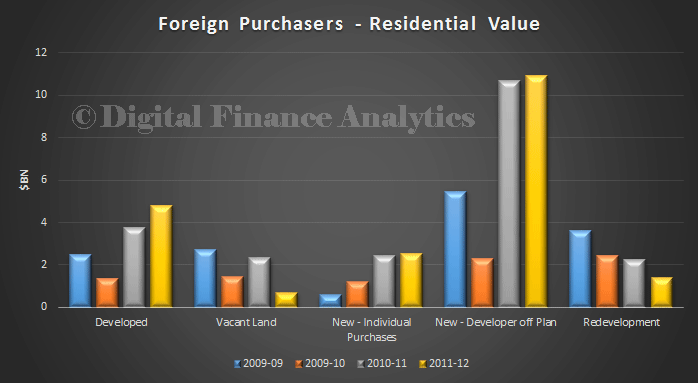Top 6 Factors That Drive Investment In China
Post on: 16 Март, 2015 No Comment

Participation of developing countries in World Trade: Overview of major trends and underlying factors
WT/COMTD/W/15
16 August 1996
Committee on Trade and Development
Participation of developing countries in World Trade: Overview of major trends and underlying factors
Note by the Secretariat
Summary and conclusions
This paper provides an overview of major trends in the participation of developing countries in world trade over the past two decades, followed by a brief examination of some of the key factors that were associated with trends for different groups of developing countries — in particular, the sharply different trade performance of most developing countries in Asia (very positive) and that of a number of the poorest developing countries (very disappointing).
Part I on “Major Trends in Developing Countries’ Trade Performance” documents a number of key developments in world merchandise trade:See footnote 1
* The share of manufactures in world merchandise trade fluctuated in the range of 55-60 per cent between 1973 and 1985, then increased sharply, reaching 75 per cent by 1995.
* After peaking at 28 per cent in 1980 (mainly due to exports of fuels), the share of developing countries in world merchandise trade declined until the second half of the 1980s, after which it resumed growing as petroleum prices bottomed out and the developing countries continued to expand their share of world trade in manufactures.
* Since 1980, the share of developing countries in world exports of mining products (mainly fuels) has fallen by a quarter, while their share of world trade in manufactures has doubled from 10 to 20 per cent.
* As a group, the Asian developing countries have out-performed the other developing countries by a wide margin in terms of their share of world trade, their share of FDI flows to developing countries, and their ratio of trade-to-GDP.
* A comparison of 25 developing countries whose export growth between 1985 and 1994 exceeded the world average, and a group of 35 developing countries whose exports in 1994 were below the 1985 level, shows a high correlation between export performance and the share of manufactured goods in merchandise exports.
* A comparison of the export performance of the least developed countries (LLDCs) since 1980 with that of all developing countries confirms not only a strong correlation between export performance and the share of manufactures in exports, but a similar positive correlation between exports and both the share of investment in GDP and the share of manufactures in GDP. (This point and the preceding one are supported by the results of a recent World Bank study summarized in Box 1.)
Part II on “Factors Underlying the Varied Trade Performances of Developing Countries” begins with a brief review of selected key external factors that are generally believed to play a role in explaining the variation in trade performance across groups in the past two decades:
Access to foreign markets. While the average level of protection in the industrial countries is relatively low, there are serious barriers to entry in certain sectors of particular interest to developing countries — including agriculture, textiles, clothing and fish and fish products. Developing countries have also expressed concern about preference erosion, tariff escalation and the risks in being left out of the proliferating free trade areas and customs unions. While these considerations clearly are relevant to understanding the trade performance of developing countries as a group, they are less helpful in explaining why some developing countries have experienced a dynamic growth of exports while others have seen their exports stagnate or even decline; indeed, in some instances the countries with a poor export performance had better access to industrial country markets than those countries whose exports expanded rapidly.
Capital inflows. The data document the well-known trend for official development aid to represent a much smaller share, and private capital flows a much larger share, of capital flows to developing countries.See footnote 2 While the share of developing countries in total world FDI flows more than doubled from 15 per cent in 1986-90 to more than 35 per cent in 1994, the share going to the LLDCs remained stagnant at an insignificant 0.4 per cent. Indeed, ten developing countries received nearly 80 per cent of the FDI going to developing countries.
Other external factors. Due to their typically smaller size and less diversified economic structure, many developing counties are more strongly affected by, and more vulnerable to, changes in the international environment than the industrial countries. Over 1984-93, the IMF estimates that fluctuations in world interest rates on their outstanding debts, cyclical changes in industrial country demand for their exports, and declines in primary commodity prices, combined to reduce the average growth rate of those developing countries with the lowest growth performance by three-quarters of one percentage point. Mention should be made of one factor that straddles the external/domestic distinction, namely the debt burden of the LLDCs. There is an emerging consensus on the need to address the LLDCs’ debt burden by new methods and approaches, and the IMF and the World Bank are considering a plan that would bring the level of debt down to a manageable level for LLDCs pursuing sound economic policies.
Next, the paper considers domestic factors that are commonly believed to play a role in explanations of differences across countries in the degree of participation in world trade:
Trade policies and participation in the WTO. For the most part, the countries which have experienced strong export growth have lower levels of import protection than countries with stagnant or declining exports. Looking at trade regimes more broadly, developing countries which are WTO members will benefit from the new rules and disciplines agreed to in the Uruguay Round, as regards both the security of their access to the markets of trading partners, and the transparency and predictability of their own trade regimes. Commitments in their goods and services schedules also help lock-in reforms in the trade regime, thereby adding to the credibility of the reforms in the eyes of foreign and domestic investors. However, for developing countries — and especially for the LLDCs — to take greater advantage of the benefits to be drawn from the multilateral trading system, there needs to be an expansion of their human resources and institutional infrastructure in the trade policy area.
Export concentration. In most of the least developed and other low-income countries, primary products — incorporating low levels of processing — continue to account for the bulk of both national production and exports. Given the changing structure of world trade described at the beginning of this paper, it is not surprising that most of the countries that have participated little or not at all in global integration are primary commodity-dependent countries with relatively small and highly inefficient manufacturing sectors. However, a recent World Bank study calls into question the conventional wisdom that “commodity dependence” is always bad for economic growth, concluding that “countries can be both commodity dependent and have high export and income growth”.See footnote 3

Macroeconomic policies. Countries which recorded above-average export growth and ability to attract FDI reported median inflation rates well below those in the less successful performers, along with considerably less real exchange rate volatility. The less successful groups, moreover, tended to have higher budget deficits, more volatile deficits, and deficits that declined at a slower rate (those in the poorest performing group actually expanded their deficits during the 1980s). The experience of different countries’ reform efforts suggest that stable macroeconomic policies, structural reforms, and outward-oriented trade and investment regimes go a long way to provide economic stability and thereby lower the risk premium attached to investment in LLDCs — a precondition to attracting foreign investors. In those countries which have persisted in economic reforms, the positive results are becoming apparent.
Other domestic factors. Inadequate and inefficient road/rail/air transport facilities, storage facilities and telecommunications have also acted to limit the supply-side response of developing countries, with the problems being especially serious in the LLDCs. At the institutional level, many developing countries, particularly LLDCs, lack a transparent legal and regulatory framework, including company and bankruptcy laws and investment codes. In most LLDCs, the private sector is constrained not only by shortages of capital, but also of entrepreneurial, managerial, technical and marketing skills. Efforts to enhance export performance will require not only technical assistance aimed at strengthening the institutional infrastructure for trade and trade policy, but also initiatives aimed at enhancing the outward orientation of the private sector. Enterprise-oriented technical cooperation programmes can underpin efforts to improve international marketing and business development.
Interaction among external and domestic factors. In reality, the many external and domestic factors that determine a country’s export performance — and more generally the pace of its integration into the global economy — do not operate independently. There is a complex interaction, both positive and negative; a factor in one category can interact with others in the category, and developments in external factors can improve or worsen the effects of domestic factors and vice versa.
I. Major trends in developing countries’ Trade Performance
The changing structure of world trade
Over the past two decades developments in the three broad product categories of world merchandise trade have differed sharply. While the value of exports of mining products (mainly fuels) and agricultural products rose between four and five times, those of manufactured goods increased nine times (Chart 1.A). Most of these differences in long term developments can be attributed to volume rather than price changes. On a volume basis, manufactured exports more than tripled, in contrast to gains of 70 per cent and 25 per cent, respectively, for agricultural products and mining products (Chart 2.A). Nominal prices for mining products as a group in 1994 stood about 3Ѕ times above their level in 1973, while those of manufactures and agricultural products were up 2.8 and 2.2 times, respectively (Chart 2.B).See footnote 4
After fluctuating in the range of 55 to 60 per cent between 1973 and 1985, the share of manufactures in merchandise trade had increased sharply to around 78 per cent by 1995 (Chart 1.B). The remaining 22 per cent is divided about equally between agriculture and mining. Agricultural products experienced a slow but steady erosion of their share over the two decades, from more than 20 per cent of world trade in 1973 to somewhat more than 11 per cent in 1995. The share of mining products — heavily influenced by oil prices — peaked in 1980 and dropped sharply thereafter. In 1995, the share of mining products in world merchandise trade was around 11 per cent, compared with 17 per cent in 1973 and 28 per cent in 1980.
Trade performance of the aggregate of developing countries
Taking into account the very large share of primary products in developing countries’ exports in the 1970s (more than three-quarters), it is not surprising that the share of developing countries (as a group) in world merchandise trade peaked in the same year as the share of mining products did, namely 1980 (Table 1). Following the historical peak share of 28 per cent that year, the share of the developing countries in world merchandise trade declined in line with oil prices over the first half of the 1980s. Once oil prices bottomed out in 1986, the share of the developing countries started to rise again, largely due to their growing share of world trade in manufactured goods.
Table 1
Share of developing countries in world merchandise exports, 1973-1995
(Percentage based on value figures)














